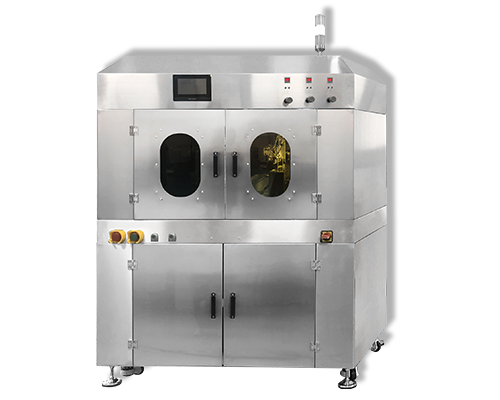Balloon Catheter UV Curing Process Requirements
Balloon Catheter UV Curing Process Requirements – Balloon Catheter Coating – Cheersonic
According to the theoretical basis and experimental analysis of the UV curing process of the balloon catheter, in order to obtain a good curing effect of the hydrophilic coating on the medical catheter and meet the needs of the use of the balloon catheter, the following UV curing process requirements are obtained in this paper. The developed medical catheter hydrophilic coating curing machine needs to be solved.
1. The hydrophilic coating of the cured balloon catheter should ensure uniformity and stability
The uniformity and stability of the hydrophilic coating are key indicators of the quality of the balloon catheter, especially for medical devices that need to be used in the human body, the uniformity and stability of the hydrophilic coating on the surface are related to the life safety of patients. After theoretical analysis, we concluded that in the UV curing process, factors such as the uniformity of the hydrophilic solution dipped on the surface of the medical catheter and the uniformity of UV irradiation greatly affect the uniformity and stability of the hydrophilic coating.
2. The balloon catheter needs to remain inflated during the curing process
In its natural state, an uninflated balloon catheter is flat. The dipping of such a balloon catheter into a curing agent may cause uneven adhesion of the curing agent to the surface of the catheter. During the curing process, the balloon catheter is inflated to keep it in a bulging state, so as to ensure the uniformity of the hydrophilic coating of the cured balloon catheter as much as possible.
3. Precisely control the length of the cured coating of the balloon catheter
The balloon catheter has certain requirements on the length L of the cured coating. The basic requirement is L≥1200mm. For a certain type of balloon catheter, the coating length L is a fixed value, and the accuracy error generally needs to be controlled within ±1mm.
4. Requirements for stability during the movement of the balloon catheter
The balloon catheter is generally long, and it is easy to swing during the movement, which affects the curing effect. Therefore, when designing the motion structure of the medical balloon catheter, the swing amount of the catheter should be maintained within a reasonable range. This puts forward higher requirements on the stability of the motion mechanism of the balloon catheter hydrophilic coating curing machine.
5. Curing reagent sealing requirements
The curing agent generally needs to be placed in a special container. If the curing agent has not yet started, the ultraviolet rays can irradiate the curing agent, which will cause waste of the curing agent and greatly affect the curing quality of the hydrophilic coating of the balloon catheter. Therefore, the curing agent needs to be sealed.
6. UV illuminance
Ultraviolet illuminance is an important factor affecting the curing effect of the hydrophilic coating of the catheter. The curing of the hydrophilic coating of the balloon catheter requires an ultraviolet illuminance I ≥ 25mw/cm2.
7. Curing temperature
The operation of the UV lamp generates heat, which increases the temperature of the balloon catheter as it cures. Since the balloon catheter is easily deformed by high temperature, it is generally necessary to make the surface temperature of the catheter T≤75°C.
8. Precise control of balloon catheter curing time
The curing time also plays a key role in the curing effect of the balloon catheter. The curing machine needs to precisely control the curing time of the hydrophilic coating of the balloon catheter.
The Balloon Catheter Coating System is a special spray system designed for drug eluting balloons that provides a uniform drug coating to the balloon catheter through ultrasonic spray technology. Ultrasonic Coating System can also be used to adjust and control the deposition process of drug coatings for different liquid formulations. With the help of a special fixing device design, the entire balloon catheter can be sprayed with a maximum spraying length of 280 mm., It also has the functions of solvent doping, pre-heating, humidity control, and drying. The equipment has the characteristics of precise application amount, uniform film layer, and high utilization rate of chemical liquid. Cheersonic has extensive experience in surface coating of implantable medical devices (such as drug stents and balloons), and can provide customers with complete solutions.

Ultrasonic nozzles are particularly suitable for a wide range of medical coating applications due to their very precise, non-blocking, repeatable spray performance and extremely low flow rate capability. For several years, Cheersonic has been providing ultrasonic medical coating system to medical device manufacturers worldwide. As medical device technology evolves, we will continue to design unique medical coating ultrasonic spray solutions to enhance patient safety and provide the highest quality medical device coating on the market.

